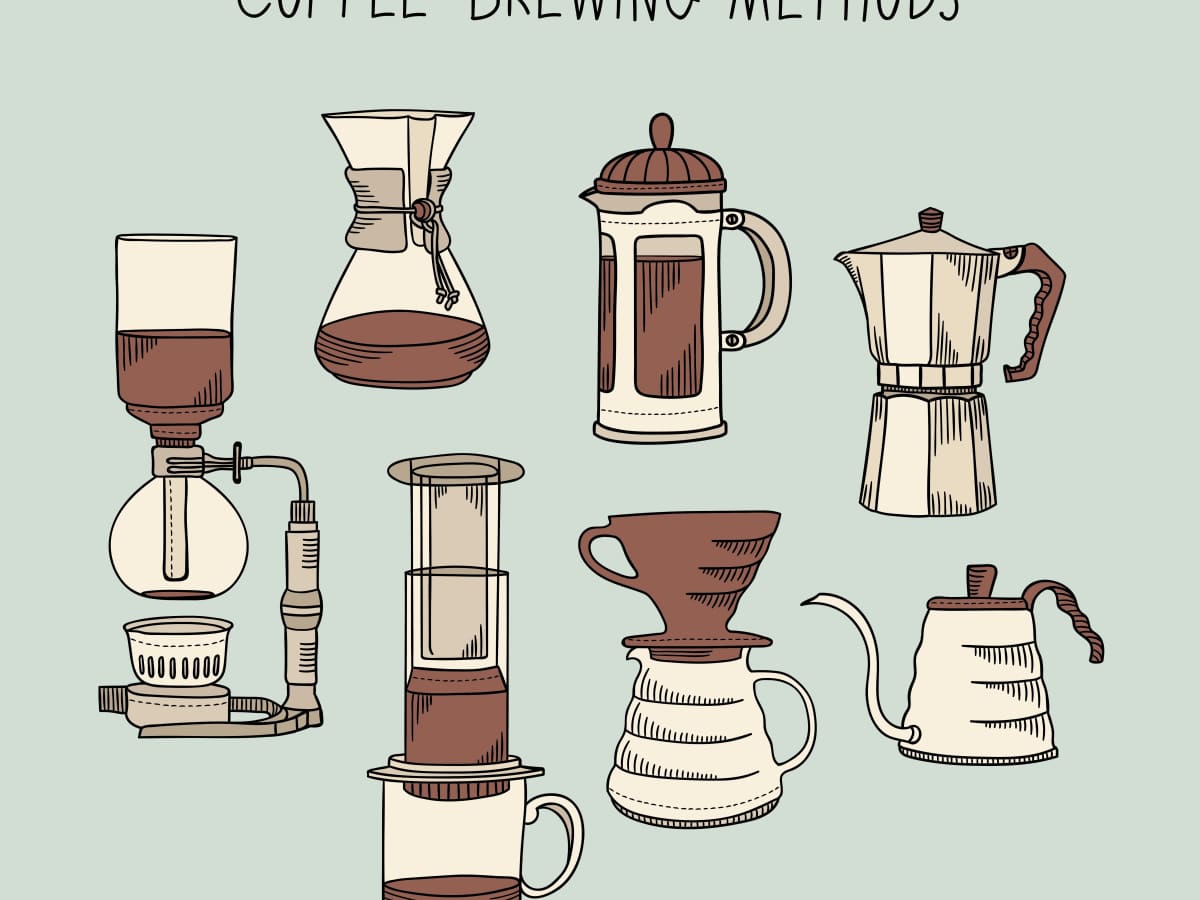Coffee Brewing Methods Debunked: From French Press to Cold Mixture
Coffee Brewing Methods Debunked: From French Press to Cold Mixture
Blog Article
The Scientific Research Behind Coffee Developing: Exactly How Temperature and Time Affect Your Beverage
Understanding the science behind coffee developing discloses that temperature level and time are not simple variables however critical elements that dictate the drink's taste profile and overall quality. The optimum developing temperature usually falls in between 195 ° F and 205 ° F, while the duration of removal differs substantially across various approaches. This interaction of elements can result in a mug that is either wonderful or frustrating. As we check out the nuances of these elements, the inquiry occurs: how can one properly equilibrium temperature and time to attain that ideal brew?
The Chemistry of Coffee Removal
The chemistry of coffee extraction digs into the complex processes that transform raw coffee beans right into the aromatic drink enjoyed worldwide. This makeover mainly entails the solubility of various compounds existing in the beans, which are influenced by aspects such as work size, water high quality, and the developing method utilized.
Throughout the brewing process, warm water acts as a solvent, drawing out soluble substances, including caffeine, lipids, acids, and sugars, from the coffee grounds. Each substance adds to the taste profile, scent, and body of the last drink. Acids are accountable for appetizing and intense notes, while oils add to an abundant mouthfeel.
The first phases of brewing essence acids and sugars, leading to an enjoyable acidity, while long term removal can lead to resentment due to over-extraction of unfavorable compounds. Comprehending these chemical interactions is essential for optimizing developing methods, as the balance between removal time and water temperature can considerably influence the total high quality of the coffee.
Ideal Developing Temperatures
Discovering the best developing temperature level is vital for unlocking the complete capacity of coffee tastes and scents - coffee brewing methods. Research shows that the ideal range for developing coffee lies in between 195 ° F to 205 ° F(90 ° C to 96 ° C) Within this range, the removal process effectively liquifies the desirable soluble substances in coffee beans, resulting in a well balanced and tasty mug
Developing at reduced temperatures, such as listed below 195 ° F(90 ° C ), may cause under-extraction, yielding an acidic and weak brew with low-key flavors. Alternatively, brewing at temperature levels exceeding 205 ° F(96 ° C) can cause over-extraction, producing a severe and bitter preference due to the extreme dissolution of undesirable compounds, such as tannins.
In addition, the perfect brewing temperature level can vary relying on the coffee bean kind and roast degree. For example, lighter roasts often take advantage of a little higher temperatures to boost their complex flavor accounts, while darker roasts might be much better suited to lower temperature levels to mitigate resentment.
Eventually, keeping accuracy in developing temperature levels is vital for attaining an unified equilibrium of tastes, making sure that every mug of coffee provides a gratifying sensory experience.
Effect of Brewing Time
Developing time plays an essential function in determining the taste profile and overall top quality of coffee. Shorter brewing times can result in under-extraction, leading to a weak or sour flavor, as not adequate soluble compounds are dissolved.
Ideal brewing time varies depending on the method made use of and the grind size of the coffee. A French press generally calls for about 4 minutes, while coffee extraction is normally completed within 25 to 30 secs. It is important to adjust brewing time in combination with various other variables, such as water temperature and coffee-to-water proportion, to achieve the preferred taste profile.
Recognizing the impact of developing time makes it possible for coffee lovers to improve their brewing the original source methods, ultimately improving the sensory experience of their mug (coffee brewing methods). With careful interest to this variable, one can open the full capacity of the coffee, disclosing its unique attributes and subtleties
Brewing Methods and Their Impacts

For example, approaches like French press and cool mixture permit a much longer steeping time, resulting in a fuller body and robust flavor due to enhanced extraction of oils and soluble solids. On the other dig this hand, espresso brewing utilizes high stress and a much shorter extraction time, creating a focused shot that emphasizes intense flavors and a rich crema.
Pour-over techniques, such as Chemex or V60, offer an even more regulated removal procedure, enabling the brewer to manipulate flow price and water circulation, which can boost illumination and clearness. Percolation techniques cycle water through the coffee premises numerous times, leading to a stronger, frequently bitter flavor.
Last but not least, the usage of paper filters versus metal filters can also influence the last taste; paper filters generally yield a cleaner mug by trapping oils and great bits, while metal filters permit even more oils to go through, contributing to a fuller mouthfeel - coffee brewing methods. Recognizing these nuances can elevate the coffee experience dramatically
Tips for Improving Your Brew
A well-executed mixture can change even the most basic coffee into an amazing experience. To achieve this, focus to detail is essential. Beginning with top quality, newly roasted beans, as their taste profile reduces in time. Grind the beans prior to making to optimize freshness, making sure the grind dimension matches your developing technique-- coarser for French press and finer for coffee.
Water high quality plays a crucial function; usage filtered water without contaminations. The perfect developing temperature level ranges between 195 ° F and 205 ° F(90 ° C to 96 ° C ) Also warm can swelter the coffee, while as well trendy may under-extract tastes.
Timing is equally important. For immersion techniques, steeping for 3 to five mins is optimum, whereas drip approaches commonly take around 5 mins. Trying out brew times to discover your favored toughness.

Final Thought
In summary, the intricate connection between temperature and time is extremely important in the coffee developing process. Recognizing these scientific principles encourages individuals to improve their brewing techniques, inevitably leading to a much more balanced and delightful coffee experience.
Comprehending the scientific research behind coffee developing exposes that temperature level and time are not simple variables yet critical aspects that dictate the beverage's taste account and general top quality. Comprehending these chemical interactions is critical for enhancing developing strategies, as the equilibrium between removal time and water temperature can dramatically influence the total quality of the coffee.Developing time plays a critical duty in determining the taste profile and overall top quality of coffee. By concentrating on these elements-- bean high quality, grind dimension, water temperature level, steeping time, and ratio-- you can elevate your coffee developing process, official site resulting in a regularly exceptional mug.
In recap, the intricate partnership between temperature level and time is critical in the coffee brewing procedure.
Report this page